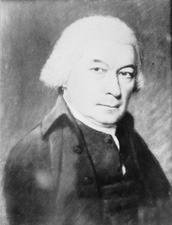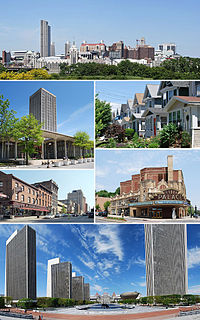Background
Federalist John Sloss Hobart had been elected in January 1798 for the remainder of Philip Schuyler's term (1797–1803) but had resigned on April 16 after his appointment to the United States District Court for the District of New York. Federalist William North was appointed by Governor John Jay to fill the vacancy temporarily, and took his seat on May 21, Congress being in session until July 16, 1798.

John Sloss Hobart was an American jurist and politician. He was a member of the Federalist Party who served as United States Senator from New York, and later as a United States federal judge.

Philip John Schuyler was a general in the American Revolution and a United States Senator from New York. He is usually known as Philip Schuyler, while his son is usually known as Philip J. Schuyler.

William North was an American soldier and politician.
At the State election in April 1798, Federalist majorities were elected to both houses of the 22nd New York State Legislature which met from August 9 to 17, 1798; and from January 2 to April 3, 1799, at Albany, New York.

The 22nd New York State Legislature, consisting of the New York State Senate and the New York State Assembly, met from August 9, 1798, to April 3, 1799, during the fourth year of John Jay's governorship, in Albany.

Albany is the capital of the U.S. state of New York and the seat of Albany County. Albany is located on the west bank of the Hudson River approximately 10 miles (16 km) south of its confluence with the Mohawk River and approximately 135 miles (220 km) north of New York City.

John Tayler was a merchant and politician. He served nine years as Lieutenant Governor of New York, four months as the fifth Governor of New York, and also in both houses of the New York State Legislature.
The 1796 United States Senate special election in New York was held on November 9, 1796, by the New York State Legislature to elect a U.S. Senator to represent the State of New York in the United States Senate.
The 1797 United States Senate election in New York was held on January 24, 1797, by the New York State Legislature to elect a U.S. Senator to represent the State of New York in the United States Senate.
The first 1798 United States Senate special election in New York was held on January 11, 1798, by the New York State Legislature to elect a U.S. Senator to represent the State of New York in the United States Senate.
The first 1800 United States Senate special election in New York was held on April 3, 1800, by the New York State Legislature to elect a U.S. Senator to represent the State of New York in the United States Senate.
The second 1800 United States Senate special election in New York was held on November 6, 1800, by the New York State Legislature to elect a U.S. Senator to represent the State of New York in the United States Senate.
The 1801 United States Senate election in New York was held on January 27, 1801, by the New York State Legislature to elect a U.S. Senator to represent the State of New York in the United States Senate.
The 1802 United States Senate special election in New York was held on February 9, 1802, by the New York State Legislature to elect a U.S. Senator to represent the State of New York in the United States Senate.
The 1803 United States Senate election in New York was held on February 1, 1803, by the New York State Legislature to elect a U.S. Senator to represent the State of New York in the United States Senate.
The first 1804 United States Senate special election in New York was held on February 3, 1804, by the New York State Legislature to elect two U.S. Senators to represent the State of New York in the United States Senate.
The second 1804 United States Senate special election in New York was held on November 9, 1804, by the New York State Legislature to elect a U.S. Senator to represent the State of New York in the United States Senate.
The United States Senate elections of 1842 and 1843 were elections which had the Whigs lose seats but maintain control of the United States Senate. Although they lost three seats in the general elections, they gained two of them back by the start of the first session in special elections.
The 1804 United States House of Representatives elections in New York were held from April 24 to 26, 1804, to elect 17 U.S. Representatives to represent the State of New York in the United States House of Representatives of the 9th United States Congress. At the same time, a vacancy was filled in the 8th United States Congress.

The 1808 United States House of Representatives elections in New York were held from April 26 to 28, 1808, to elect 17 U.S. Representatives to represent the State of New York in the United States House of Representatives of the 11th United States Congress. At the same time, a vacancy was filled in the 10th United States Congress.

The 23rd New York State Legislature, consisting of the New York State Senate and the New York State Assembly, met from January 28 to April 8, 1800, during the fifth year of John Jay's governorship, in Albany.

The 24th New York State Legislature, consisting of the New York State Senate and the New York State Assembly, met from November 4, 1800, to April 8, 1801, during the sixth year of John Jay's governorship, in Albany.

The 25th New York State Legislature, consisting of the New York State Senate and the New York State Assembly, met from January 26 to April 5, 1802, during the first year of George Clinton's second tenure as Governor of New York, in Albany.

The 40th New York State Legislature, consisting of the New York State Senate and the New York State Assembly, met from November 5, 1816, to April 15, 1817, during the tenth year of Daniel D. Tompkins's governorship, and while John Tayler was Acting Governor, in Albany.

The 41st New York State Legislature, consisting of the New York State Senate and the New York State Assembly, met from January 27 to April 21, 1818, during the first year of DeWitt Clinton's governorship, in Albany.













